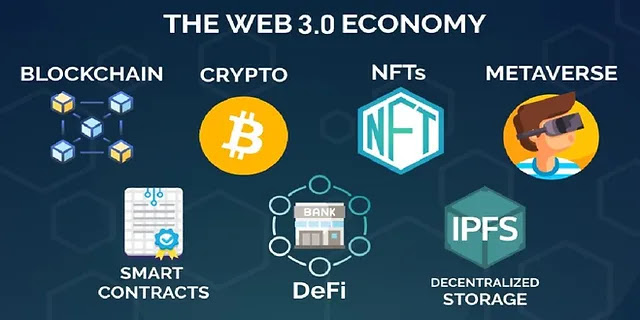मैं आपको बताने जा रहा हूँ कि आप कैसे जान सकते हैं कि आपका आधार कार्ड आपके पैन कार्ड से लिंक है या नहीं। आधार कार्ड और पैन कार्ड दोनों ही भारतीय नागरिकों के लिए महत्वपूर्ण दस्तावेज होते हैं। सरकारी कार्यों और विभिन्न अर्थिक लेन-देन के लिए आपके आधार कार्ड को आपके पैन कार्ड से जोड़ना जरूरी है। इस ब्लॉग में मैं आपको बताऊंगा कि आप कैसे इसका पता कर सकते हैं: भारत के इनकम टैक्स डिपार्टमेंट की आधिकारिक वेबसाइट ( https://www.incometax.gov.in/ ) पर जाएं और "Quick Links" अनुभाग में "Link Aadhaar" विकल्प पर क्लिक करें। आप एक नए पृष्ठ पर रीडायरेक्ट होंगे, जहाँ आपको आपका पैन नंबर, आधार नंबर और आधार के अनुसार नाम भरना होगा। विवरण भरते हुए, "View Link Aadhaar Status" बटन पर क्लिक करें। अगर आपका आधार कार्ड पहले से ही आपके पैन कार्ड से लिंक है, तो आपको स्क्रीन पर एक संदेश दिखाई देगा जो यह बताता है कि "Your Aadhaar is already linked with your PAN"। अगर आपका आधार कारड पहले से ही आपके पैन कार्ड से लिंक नहीं है, तो आपको "Status" का संदेश दिखाई देगा जो यह बता...
Introduction
In today's digital landscape, web 2.0 and web 3.0 technologies have transformed the way businesses operate, and business intelligence has become essential for companies to make data-driven decisions. But what are the key differences between web 2.0 and web 3.0 business intelligence? And which one is better for your business needs? In this article, we'll explore the features, characteristics, and potential of both web 2.0 and web 3.0 business intelligence.
Web 2.0 Business IntelligenceWeb 2.0 Business Intelligence refers to a type of business intelligence that leverages social media, collaboration tools, and cloud-based technologies. The key features of web 2.0 business intelligence include interactive dashboards, real-time data analytics, and self-service reporting tools. Examples of web 2.0 business intelligence include Google Analytics, Hootsuite, and Salesforce.
Web 3.0 Business IntelligenceWeb 3.0 Business Intelligence is a newer and more advanced form of business intelligence that is powered by artificial intelligence, machine learning, and blockchain technology. The key features of web 3.0 business intelligence include decentralized data storage, smart contracts, and predictive analytics. Examples of web 3.0 business intelligence include Ocean Protocol, Fetch.ai, and Numina.
Web 3.0 vs. Web 2.0 Business Intelligence
The main difference between web 3.0 and web 2.0 business intelligence is the technology behind it. Web 2.0 business intelligence relies on cloud-based technologies and social media, while web 3.0 business intelligence leverages decentralized data storage, smart contracts, and predictive analytics. Web 3.0 business intelligence also offers greater security and privacy, as data is stored on a decentralized network rather than on centralized servers.
Advantages and Disadvantages of Web 2.0 and Web 3.0 Business Intelligence
Web 2.0 business intelligence offers real-time data analytics and self-service reporting tools, which can be valuable for businesses with limited resources. However, it can be limited in terms of the scope and depth of data analysis. Web 3.0 business intelligence, on the other hand, offers more advanced analytics and predictive capabilities, but it requires more technical expertise and can be more expensive to implement.
Future of Business Intelligence
The future of business intelligence is likely to be shaped by web 3.0 technologies, as they offer more advanced and secure data analysis capabilities. Web 3.0 technologies like artificial intelligence, machine learning, and blockchain will allow businesses to automate data analysis and decision-making processes, resulting in faster and more accurate insights.
The future of business intelligence is likely to be shaped by web 3.0 technologies, as they offer more advanced and secure data analysis capabilities. Web 3.0 technologies like artificial intelligence, machine learning, and blockchain will allow businesses to automate data analysis and decision-making processes, resulting in faster and more accurate insights.
Conclusion
In conclusion, both web 2.0 and web 3.0 business intelligence have their advantages and disadvantages, and the choice of which one to use depends on the needs and resources of your business. However, with the rise of web 3.0 technologies, it is clear that the future of business intelligence lies in more advanced and secure data analysis capabilities. As businesses continue to generate more data, they will need to adopt more advanced technologies to remain competitive and make data-driven decisions.






Comments